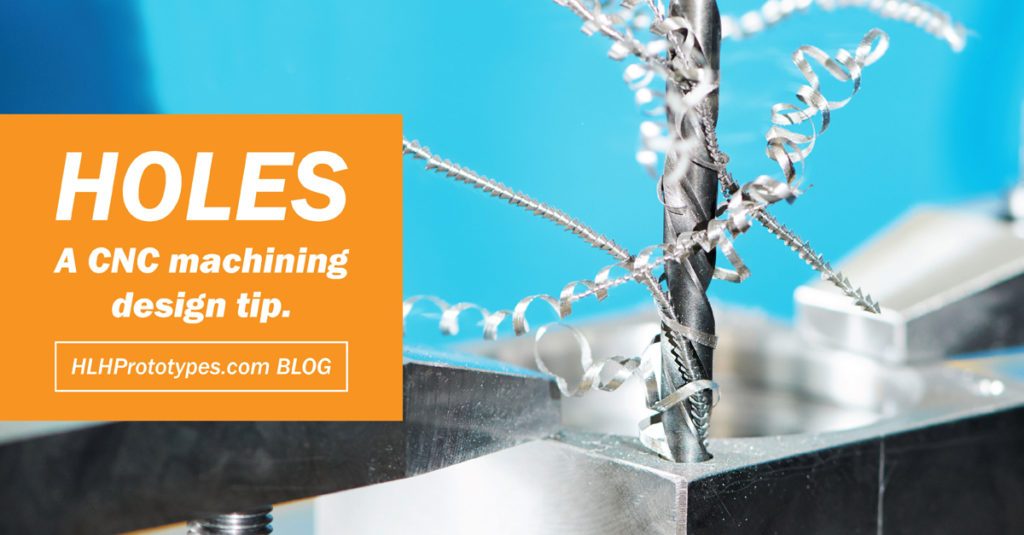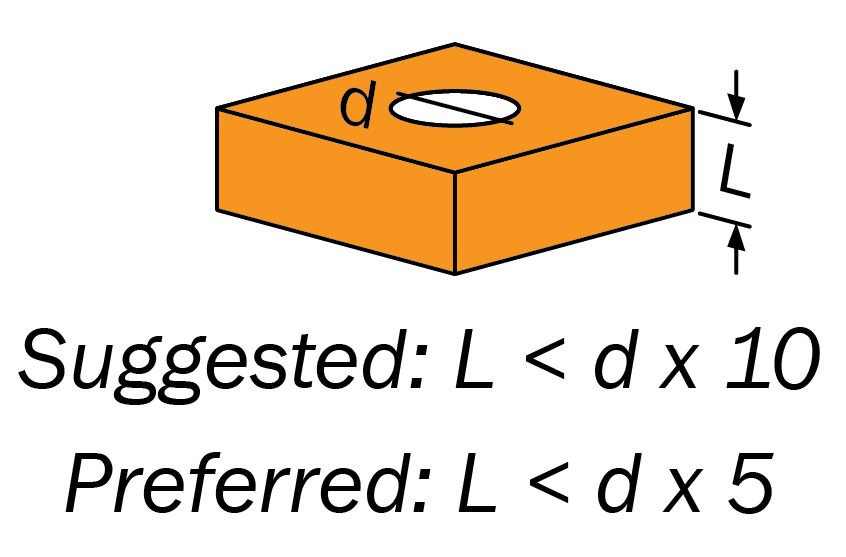CNC Hole Drilling Machine Design Tips

October 26, 2018
When it comes to designing parts for manufacturing via CNC machining, there are a few rules to follow. Adhering to these rules will result in superior parts that are stronger, more accurate, and boast improved surface finishing. As we wrap up CNC machining week at HLH, we’re sharing a quick tip on how to design holes for your part or product.
For optimal design, all holes less than 20 mm in diameter should accommodate standard drill bit sizes, with a preference for metric sizes when possible. The depth of the hole is suggested to be 10 times its diameter or less. This consideration is crucial for both the drill holes themselves and the selection of the drilling head. When employing a deep hole drilling machine or engaging in CNC deep hole drilling, maintaining the right position and ensuring the workpiece is securely fixed becomes paramount.
The types of CNC drilling machines available, including those designed for specific hole CNC drilling operations, offer a variety of capabilities to address different drilling needs. The machine’s spindle plays a critical role in the drilling operation, affecting the precision and quality of the drilled holes. Additionally, the design should consider the groove placement, which can impact the part’s structural integrity and functionality.
By following this design tip and others that we will share, you can achieve a part design that is well-suited for CNC machining. Whether you’re utilizing a simple CNC drilling operation or complex milling and drilling processes, understanding the nuances of your CNC drilling machine’s capabilities, including its drilling head and spindle configuration, will greatly enhance the outcome of your manufactured part. Stay tuned for more CNC machining guidance from HLH to help you design successful parts for CNC machining.

HLH CNC Drilling Machine Size
At HLH, our CNC drilling capabilities are supported by an advanced fleet of machines, including milling machines, CNC routers, and horizontal drilling machines. These machines are meticulously selected to accommodate a wide range of drilling and machining needs across various industries.
One of the key highlights of our CNC machining services is the size capacity of our equipment. Our machines can handle large part dimensions, with one of our standout machines boasting a size capacity of 3000x1200x850mm. This allows for the machining of large parts or multiple smaller parts in a single setup, enhancing efficiency and precision.
The inclusion of both milling machines and CNC routers in our lineup ensures versatility in machining operations. Whether it’s intricate milling tasks or complex routing applications, our equipment is equipped to deliver with precision and quality. The horizontal drilling machine further complements our capabilities, providing specialized drilling operations that require precise horizontal boreholes.
With these size capabilities, HLH is positioned to cater to the needs of projects requiring significant part dimensions, offering solutions that are not just about meeting size requirements but also about ensuring the highest standards of precision and quality in CNC machining.
CNC Hole Drill Machine Advantages
In our CNC machining operations, we prioritize high speed, exceptional dimensional accuracy, and superior surface finishes. Our advanced CNC milling processes and precision machine tools enable us to achieve these high standards consistently. CNC drilling is not just a machining task; it’s a crucial part of our commitment to delivering parts that meet exact specifications.
Our machinery’s capabilities ensure a wide material selection, accommodating everything from metals to plastics, allowing for versatility in application across industries. Whether you’re looking for high-volume production or rapid prototypes, our CNC machining services are designed to meet your needs efficiently.
With a focus on precision and efficiency, our CNC operations offer the reliability and quality necessary for today’s demanding manufacturing environments.
Drawbacks
It can be expensive for complex
parts and for larger parts.
Tolerances: ISO 2768-1 states the tightest tolerances possible as standard are +/- 0.05mm for metals or +/- 0.2mm for plastics. Tighter tolerances should be discussed case by case.
Surface Finishes
Polishing
Sand blasting
Painting
Plating & More
Popular Materials
Plastic ABS, PC, Acrylic
Metal SS304, 316
Aluminium 6061, 7075
Plus many more
Tips and Tricks
Radius internal corners
Loosen tolerances where possible
Keep features perpendicular to the six sides
Reduce the number of setups
Keep it simple
